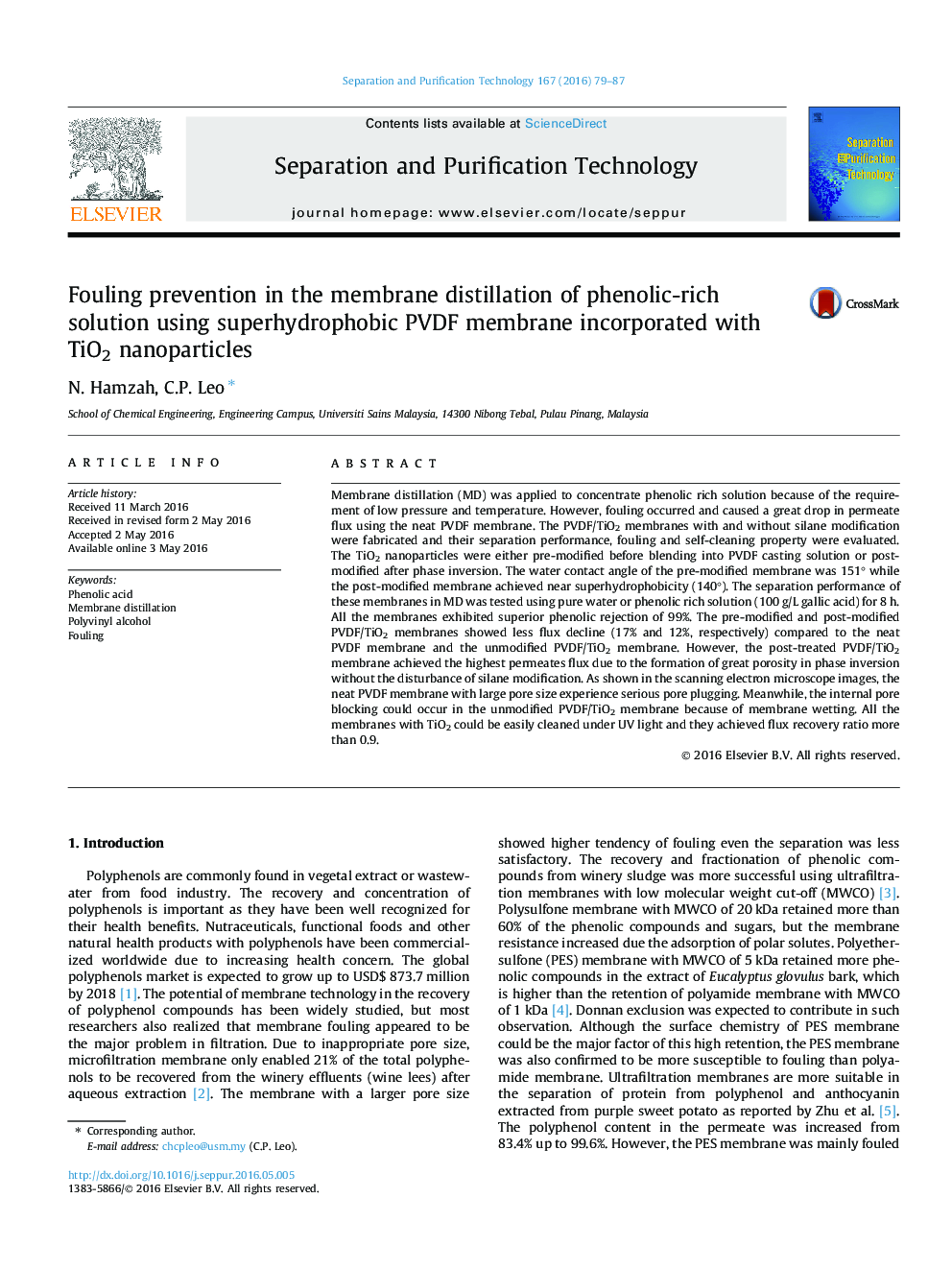| Article ID | Journal | Published Year | Pages | File Type |
|---|---|---|---|---|
| 639857 | Separation and Purification Technology | 2016 | 9 Pages |
•Membrane distillation was used to concentrate phenolic rich solution.•The rejection of phenolic compounds was higher than 99.9%.•Membrane with superhydrophobic character showed less flux decline.•Membranes with TiO2 could be easily cleaned under UV light with flux recovery ratio more than 0.9.
Membrane distillation (MD) was applied to concentrate phenolic rich solution because of the requirement of low pressure and temperature. However, fouling occurred and caused a great drop in permeate flux using the neat PVDF membrane. The PVDF/TiO2 membranes with and without silane modification were fabricated and their separation performance, fouling and self-cleaning property were evaluated. The TiO2 nanoparticles were either pre-modified before blending into PVDF casting solution or post-modified after phase inversion. The water contact angle of the pre-modified membrane was 151° while the post-modified membrane achieved near superhydrophobicity (140°). The separation performance of these membranes in MD was tested using pure water or phenolic rich solution (100 g/L gallic acid) for 8 h. All the membranes exhibited superior phenolic rejection of 99%. The pre-modified and post-modified PVDF/TiO2 membranes showed less flux decline (17% and 12%, respectively) compared to the neat PVDF membrane and the unmodified PVDF/TiO2 membrane. However, the post-treated PVDF/TiO2 membrane achieved the highest permeates flux due to the formation of great porosity in phase inversion without the disturbance of silane modification. As shown in the scanning electron microscope images, the neat PVDF membrane with large pore size experience serious pore plugging. Meanwhile, the internal pore blocking could occur in the unmodified PVDF/TiO2 membrane because of membrane wetting. All the membranes with TiO2 could be easily cleaned under UV light and they achieved flux recovery ratio more than 0.9.
